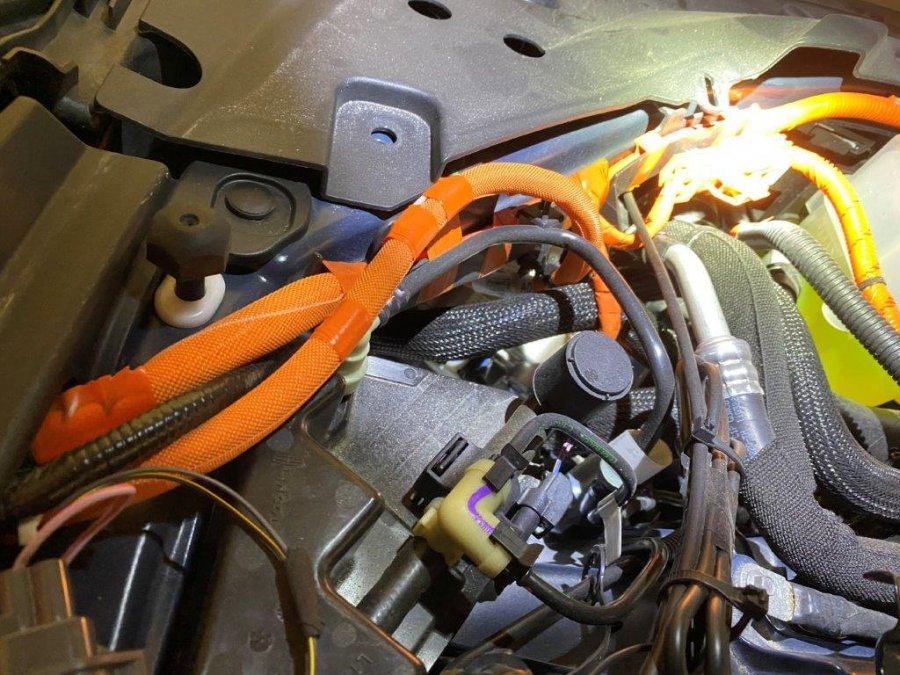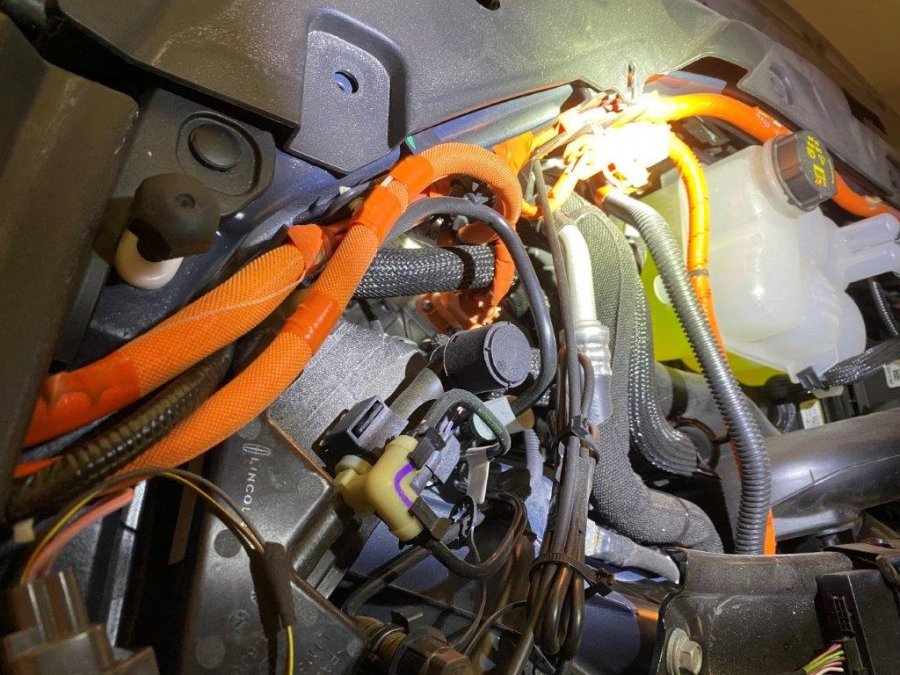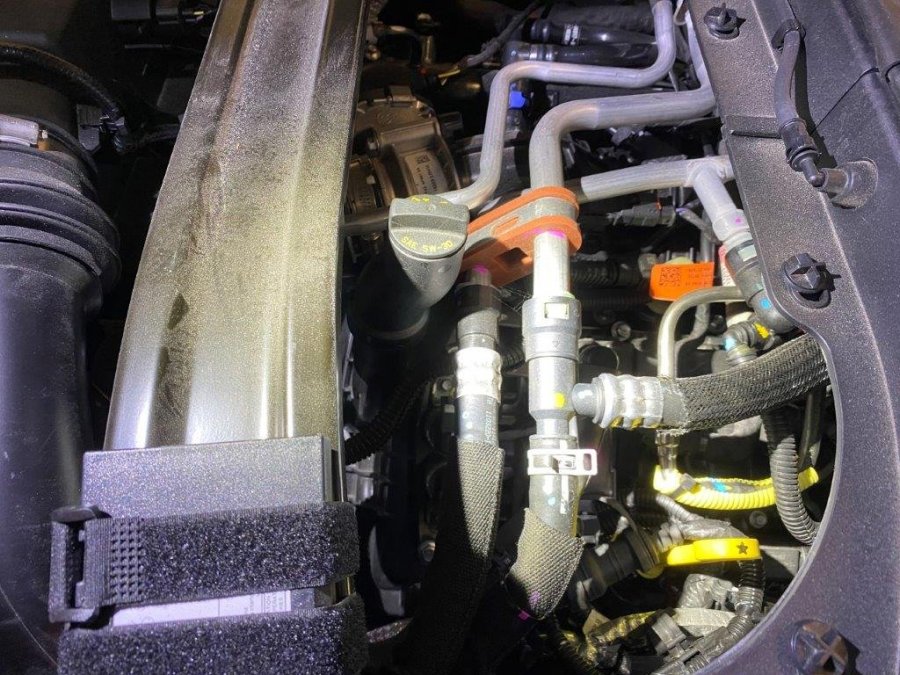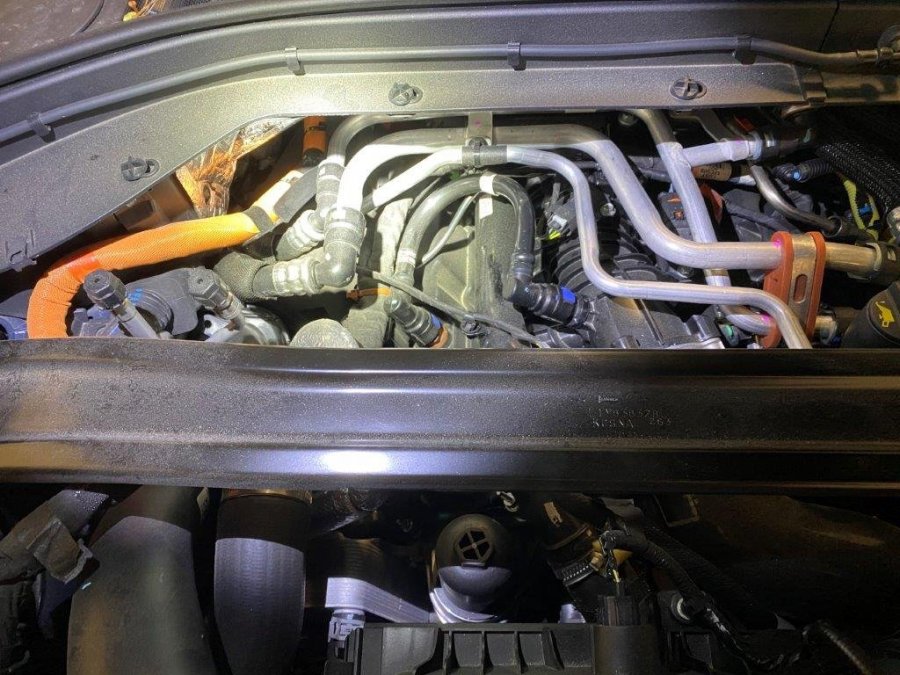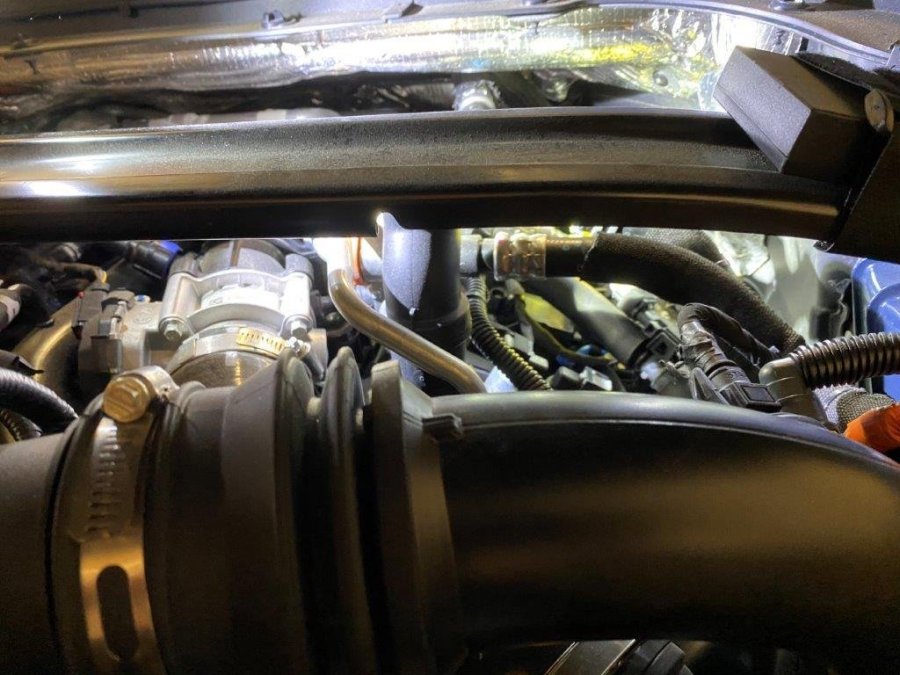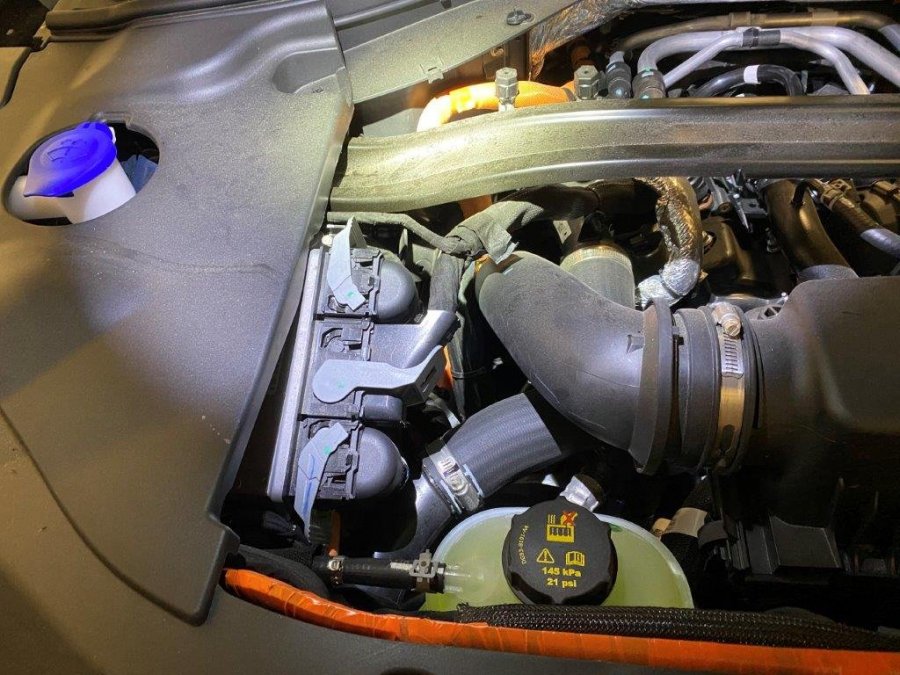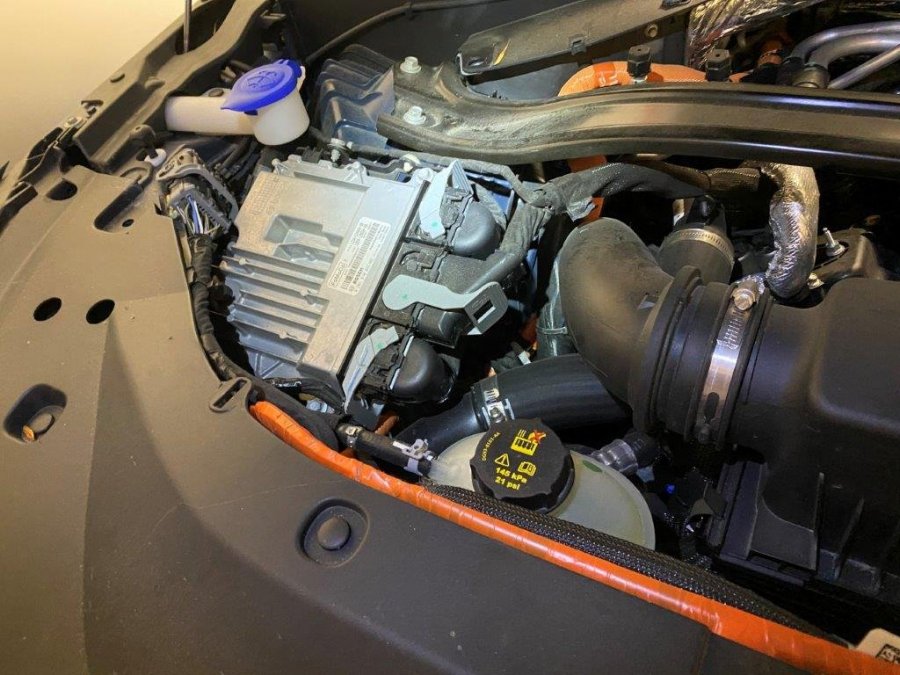

rampagex7
Member-
Posts
116 -
Joined
-
Last visited
Content Type
Profiles
Forums
Gallery
Downloads
Store
Everything posted by rampagex7
-
Damn, I thought Ford Infinite blue was the same as Lincoln Flight blue (at least that's what the dealer told me) and now after seeing your post I just looked it up the paint codes myself and you're right they are different. I was expecting our Mach E to look like the Corsair in Flight blue now this Infinite blue/Ocean Drive blue (AB code) is going to look completely different. I found a video of an Explorer ST in Infinite Blue:
-
When I was at the 2020 Toronto Auto Show they had a 2021 Corsair GT PHEV on display in Flight Blue (See photos below) It definitely doesn't have any green tones, it is a grey-blue hue and depending on the angle of view and the lighting it gives you more of a grey or blue look. From far away it doesn't look that blue at all it looks more like magnetic. Either way it's an awesome color, we ordered a Mach E Premium in Infinite Blue which is supposed to be the same color on the Ford side.
-
Nope, I didn't do any wire splicing at all for the GPS. I used one of those add-a-fuses (basically a fuse tap) to take 12V+ directly from the fuse box and I tapped into the fuse for either the rain sensor or rear wiper motor (can't remember which). I got 12V- ground from a nearby mounting bolt that was attached to the frame, just loosened the bolt and put a ring terminal with the ground wire connected to it. I'm leasing the vehicle so I didn't want anything permanently wired in and that would be easily removable. Even the GPS itself I just strapped down with velcro so I can pop it out quick if needed.
-
Had another instance of the check engine light coming back on today. Went to plug in my Aviator to the charger when I got to work this morning it started charging normally and after about 20 minutes I saw the charge port light when solid red everywhere (which is supposed to indicate a charge fault of some kind?) so I unplugged it and left it alone for a few minutes. I plugged it back in and then it started to charge normally again the lights went blue again and it charged it up to full. When I left work and turned on the vehicle the check engine light was on solid and the Lincoln app chimed up as well. Luckily I just recently got one of those BlueDriver Bluetooth OBD scanners so I scanned it myself and came up with several trouble codes U0100 and U0111 which looks like a loss of communication between the ECM and BECM. (see attached report). I'll bring it back to the dealer on Monday and let them look at it, maybe there's a loose wire harness on one of the modules or something. @mustangchief are you still getting the check light coming up on yours? What happened when you brought yours to the dealer? scan_2020_10_30_07-27-14.pdf
-

Trade in Raptor for Aviator Black Label GT?
rampagex7 replied to DrBabbitt's topic in Lincoln Aviator Forum
This is so true! I find that it is so smooth and quiet you can't tell you're speeding it feels like you're standing still no matter how fast you're going. And they just brought in photo radar this year on select streets in Toronto so now you don't even have to have a cop tailing you to get nailed with a ticket. I also don't think the photo radar camera wants to have a discussion about how nice the Aviator is to let you out of a ticket. -

Trade in Raptor for Aviator Black Label GT?
rampagex7 replied to DrBabbitt's topic in Lincoln Aviator Forum
My pleasure! Having been in your shoes hunting for info before a big purchase I definitely know the feeling of being unsatisfied at all the reviews out there. Maybe I will start my own Youtube channel one day and post my own reviews. Let me clarify: Whenever you start the vehicle, by default, the drive mode reverts to "Normal" mode (regardless of whatever mode you had it in before as this resets every ignition cycle). When in Normal mode, IF the battery is charged (either partially or fully) it will generally try to operate on only electric power (EV) only to maximize efficiency and will stay in EV until the battery is depleted then it will switch to hybrid. There are a couple of exceptions I've noted: 1. if you push the accelerator hard/quickly or floor it, the engine will come on immediately to give you a performance boost; 2. If it is really cold outside and it can't meet the demand for cabin heat on just electric alone (or you turn on max defrost) the engine will come on for several minutes to warm up the engine coolant and provide additional cabin heat. Once the battery is depleted it will operate in hybrid mode, but understand that battery is never fully depleted it always keeps a certain "reserve charge" and does charge the battery while you're driving in hybrid mode both using the engine and regenerative braking. Theoretically you could never plug in the vehicle to charge up the battery and it will operate like any other regular hybrid vehicle and as long as you have gas in the tank it will run just fine. Conserve mode: Works exactly same as Normal, if there is charge in the battery it will operate in EV until depleted and then switch to hybrid. The only difference with conserve is it will limit the acceleration a bit and adjust the transmission shifting slightly to supposedly give you a bit better gas mileage. (I haven't noticed any measurable difference myself) Slippery & Deep Conditions modes: Engine comes on and stays on, it operates in hybrid regardless of the battery's state of charge. In Deep conditions mode it will also raise the air suspension a few inches to give you more ground clearance. PureEV: This mode is only available if the battery has some charge and your EV range is greater than 0 km/0mi DTE. It basically will keep it operating in EV until your EV range drops to 0km/0mi then it switches to Normal mode and will operate as hybrid (PureEV mode actually disappears from the screen after). The difference between PureEV and Normal is that when in PureEV it will not engage the engine right away if you accelerate hard (see exception #1 above) instead a message will pop up in the gauge cluster saying "Please press OK to enable engine". Exception 2 will still apply for extreme cold, it will turn on the engine automatically to supplement the cabin heat and then a message pops up saying: "Engine enabled for system performance" and the power flow screen will say: Engine On due to: Engine Cold, Climate Setting. PreserveEV: In this mode the engine is always on (it doesn't even turn off during decelerating or braking) and only the engine is providing drive power to the wheels because the electric motor is now acting as a generator to recharge the battery. Excite Mode: Engine comes on and stays on, it will operate in hybrid regardless of the battery's state of charge. This is where you are guaranteed to get your full 494HP and 630lb/ft of torque as it will always give you the combined drive power of both the engine and electric motor at the same time. Believe me you feel it. Accelerator response is much more rapid and it will upshift at higher rpms to give you the sporty performance. Ironically I noticed that while Excite mode is worse for gas mileage, it is much better at recharging the battery than PerserveEV mode, especially if you downshift manually with the paddle shifters while decelerating and keep the engine rpm higher. I guess it's because the higher the engine rpm the faster the electric motor spins in sync to regenerate more power. Let me assure you that regardless of whether it is driving on EV only or in hybrid there is always plenty of power, you will not be disappointed. The electric motor is powerful and because it's situated in tandem with the engine right in front of the torque converter you get the same mechanical advantage of the 10 speed transmission with just the electric motor. (see my previous posts I put up photos of the cutaway of the 2020 Explorer from the 2019 Toronto Auto show showing the hybrid powertrain or PM me and I can send them to you.) I have no complaints about the EV performance, it accelerates just fine (although at bit slower than in hybrid) and I can get up to 130km/h (80mph) on the highway no problem in EV mode. There is a really nice screen available on the center touchscreen called "Power Flow" that has an animation of the vehicle, engine, and battery which shows you exactly what is happening at all times: whether the engine is on or not (and why!), where the drive power is coming from, whether the AWD is powering all 4 wheels or just the rear wheels, etc. -

Trade in Raptor for Aviator Black Label GT?
rampagex7 replied to DrBabbitt's topic in Lincoln Aviator Forum
For regular charging yes a 240V outlet (need at least 20A circuit) will work fine. The max current it can be charged at is about 16A at 240V. The vehicle comes with a combination charging cord that has a standard 120V plug and a 240V plug (NEMA 6-20R). I have a dedicated Juicebox EV charging station in my garage which I like not just for charging the vehicle but because of the app that gives you live data while charging (voltage and current usage) and also statistics of your all your charge sessions (charge time, KwH used, etc.). I took a screenshot of my fuel economy stats from the Lincoln app if you want some historical data. (see below) That's based on being driven for 8 months and just under 12,000km on it to date. I wouldn't worry about long trips and trying to charge the battery while driving, just drive it normally as you would a regular gas vehicle and fill your gas tank as needed. Once your battery is depleted the engine will take over and it will drive in hybrid mode with the engine providing drive power most of the time. The engine will turn off and switch to either EV or regen braking anytime you take your foot of the gas pedal and decelerate or if you press the brake. Depending on your speed it may even turn the engine off while you're driving and switch to EV for short periods. The transition from engine to EV and vice versa is so seamless you cannot even tell! It is so quiet that most of the time if I'm not actively looking at the power flow screen or the tachometer I can't even tell whether it is running with the engine on or in EV. The Aviator has a Series-Parallel hybrid configuration, so it doesn't need for the battery to be fully recharged while driving because it can power itself with the just the engine, just the electric motor, or any combination of the two. Series hybrids (eg. Chevy Volt, BMW i3) only provide drive power to the wheels by the electric motor so the gas engine acts solely as a generator to recharge the battery and provide electricity to the motor, in these cases the battery does need to be kept charged to certain threshold while driving to provide constant power to the motor. Regarding the temperature extremes I've found the EV range is much more affected by extreme cold than heat. We've had a really hot and humid summer in Toronto this year and I used the A/C all the time and barely noticed any impact on the range at all, I had no problem getting between 35-40km of range on a full charge. However this past winter I did notice about a 25-30% drop in EV range especially on really cold days. Li-Ion batteries are not as efficient in the cold so I'm sure that also has an impact on the range. The A/C system is fully electric and powered off the high voltage battery so it has no problem keeping the cabin cool on hot days. For heating it can heat the cabin electrically if it is not too cold outside but on really cold days the engine will come on for a few minutes when you first start to provide heat or will come on if you turn on defrost or fan speed on high. A nice trick I learned from the OM is to leave the vehicle plugged into the charger overnight and then remote start while still plugged in and it will either preheat or cool the cabin electrically and will do so using the house power instead of draining the battery. You can even use the Lincoln app to program auto start times to so that it will preheat/cool before you leave in the morning which is nice feature. -

Trade in Raptor for Aviator Black Label GT?
rampagex7 replied to DrBabbitt's topic in Lincoln Aviator Forum
I've found the PreserveEV mode (at least on my Aviator GT) is definitely not practical to charge the battery after it's fully depleted. I've tried using PreserveEV several times when driving on long trips from Toronto to my cottage up north on Georgian Bay. After running out of initial EV range I switched to PreserveEV mode and even after driving on the highway at a steady speed of 120km/h (74mph) for over an hour it only recharged 8km of electric range to the battery which is pathetic, plus it does hurt your fuel economy numbers because the engine is running constantly even while decelerating or braking whereas driving in normal or conserve modes the engine will generally always turn off and switch to either EV or regen braking anytime you are not actively pushing the accelerator pedal which allows recharge by regen braking. The PreserveEV works much better if the battery is already either fully or partially charged and it will keep it at that level for later use in EV mode. The best way to charge the battery is to just plug in the normal way. For recharge while driving I get much better results with regen braking. In fact a few weeks ago on a trip up north I hit a major traffic jam on the highway and had to detour on some back roads to get around it which led to driving on some really hilly areas. I was able to go long stretches with the engine not coming on so I allowed it to coast down the hills with the regen braking kicking in. The end result is I almost doubled the normal EV range which is normally 34km (21mi) and after getting to my destination my actual distance traveled in EV was 64.3km (40mi). My actual fuel economy for the trip was 6.3L/100km (37.3mpg). (see photo below) Personally I get much better results extending the EV range with regen braking vs. using PreserveEV mode so I've given up using it. -

Trade in Raptor for Aviator Black Label GT?
rampagex7 replied to DrBabbitt's topic in Lincoln Aviator Forum
I can't comment on the Black Label experience as we don't have Black Label available here in Canada. As for the vehicle itself, I've had my Aviator GT for about 8 months now and have put about 12,000km on it so far. I love the vehicle overall and the hybrid powertrain. I've made numerous posts in other threads you can read about my experiences with the driving dynamics, charging, towing, etc. Without regurgitating all the comments from my prior posts, the short answer is don't put much stock in all the so called "Reviews" out there regarding the Aviator GT there because they don't do it justice. Look at feedback from current GT owners like myself: @rampagex7; @mustangchief;and @CoolScoop. -
I though the Escape/Kuga was supposed to have a liquid cooled battery pack similar to the Aviator GT. My Aviator GT PHEV definitely has a liquid cooled battery. As soon as you plug it in to charge the coolant pump turns on (you can hear the little whining noise under the hood and see coolant flowing from the reservoir). Depending on the ambient temperature it will also periodically bring on the main cooling fans behind the A/C condenser while it is charging, presumably to cool down the coolant flowing through the rad. Seems like a great setup to me so it would make sense if they used a similar liquid cooling system for the the Escape/Kuga PHEV. They definitely built in safeguards to protect the battery while driving as well. I've noticed a couple times while driving Aviator in EV mode for a long time especially with hard acceleration or driving up a hill with EV gauge at full limit the engine will come on and take over, then a message pops up on the Power flow screen saying "Engine on due to battery temperature" and the engine will stay on for a few minutes taking over the drive power (I guess until the battery cools down...) then it will go back to EV mode. It could also be the problem on the Escape PHEV's may be with the on board battery charging module itself overheating and not the battery itself, but I doubt Ford will ever openly disclose exactly what the problem is.
-
I have 21" wheels on my 2020 Aviator GT and am very happy with them, the air suspension gives an amazing ride so if you're getting air suspension as well so if you went up to 22" it may not make much of a difference. I had 21" wheels on my last two vehicles: 2017 and 2013 MKX's (which did not have air suspension) and was happy with them never had any issues with ride quality. The only problem I had on my 2017 MKX with the 21" polished aluminum rims were the gaps between the spokes were huge which sometimes in the winter got snow and ice trapped on the inside of the rim which if you didn't clean it out throws the wheel off balance and cause vibration while driving. Bear in mind it is not just the size of the wheels that will affect the ride but the make and quality of the tires. I'm not sure what tires come on the Aviator with 22" wheels, but the 21s on mine have Pirelli Scorpion Zero which I find are excellent, hardly any noise and great traction + handling. My previous 2017 MKX had Pirelli Scorpion Verde also great tires, but now on the Nautilus they switched the tires on the 21" wheels from Pirellis to Continentals which I'm not crazy about myself. My boss drives a 2019 Nautilus with 21's and Continentals, she only has about 15,000km so far and you can tell they are already wearing in quite a bit. I'd be shocked if she makes it to the end of her lease (48,000km) and doesn't have to put a new set of tires on.
-
We've had a previous 2016 Edge Titanium (no tow package) and it had the paddle shifters, it was replaced with a 2018 Edge Titanium when the lease was up and the 2018 Edge (also no tow package) has the paddle shifters as well. Both vehicles leased from a Toronto Ford dealer and were built in Oakville.
-
I haven't got an update from the dealer on this in a while. I just hit about 11,000km on mine and will be bringing it in to the dealer for an oil change soon, I'm going to bug them about the issue with the HUD and not showing the EV range again. My guess is that the issue probably got sidetracked because of COVID and fell through the cracks. Nobody does anything these days unless you keep on their case about it.
-
You need to turn on location services to always on and background refresh for the Lincoln app (and especially PAAK) to work properly. See screenshot below for what your app settings should look like. It might be draining your battery because the app is trying to access location or refresh itself in the background but your phone settings are blocking it so it just keeps trying repeatedly. With the settings I have below, I've never had any problems with battery drain on my phone.
-
Yes I had this before. The PAAK was very flaky on my Aviator GT when I first got it back in January. Had to bring it back to the dealer after the first couple weeks and apparently it needed some kind of massive software update that took about 4 hours to do (they would not tell me what it was, version, etc.) but that fixed the PAAK functionality back to normal. I don't think it was some simple update of the SYNC 3 system you can do yourself by downloading to USB because the dealer had to hook it up to their scan tools through the OBD port to push the update. If you're bringing it back to the dealer ask them to update your software that might fix your PAAK.
-
Does anyone know what the towing capability is on the new Mach E? I checked the order guide and it doesn’t look like there is a factory tow package option available or any details on towing. I have 2 MME’s on order and asked our dealer about it and they didn’t have any info on towing capability and said there was no tow package option available.
-
Yes I get this once in a while on my Aviator GT and I’m using PAAK on mine with iPhone 11. I find it depends on where I keep my phone if it’s in my left pocket sometimes right after I start the car I get the “No key“ message but then it goes away after minute. If I keep the phone out of pocket, resting on center console or in the cup holder it’s no problem. What did the trick for me is I got a belt clip holster for my phone and just clip it to my belt or pants and never have that problem anymore so the phone gets better Bluetooth signal to the PAAK system. I was told by Lincoln concierge that PAAK uses Bluetooth low energy mode so it’s not as powerful as regular Bluetooth communication and I guess more susceptible to interference if your phone is covered or in your pocket/jacket/etc.
-
Congrats on your new Aviator! To lock the vehicle from outside without using the fob/PAAK you need to have your fob/phone in your pocket (or otherwise within 3ft) then push the little lock symbol for 2 sec (looks like a padlock) on the driver’s door pillar right below the numeric keypad. (See photos below). My experience has been this can sometimes be tricky as you have to press it with your finger as flat as possible and cantered on the icon to activate it. Alternatively you can also press the 7/8 and 9/0 numbers simultaneously for 2 sec on the number pad. Front Passenger door has the lock icon as well. When you are pressing the lock icon there is a little red dot that lights up above the 1/2 to confirm it recognizes you pressing your finger on it. (See photos) You can of course lock it the “old fashioned” way by pressing the lock button on your fob or the lock button in the Lincoln app if using PAAK.
-
The air suspension works great on my Aviator GT as well, or at least as designed at the factory. My main complaint is that there is no button or touchscreen setting to manually adjust the suspension height without either changing the drive mode (requiring the engine to come on, which is unnecessary for a PHEV when the vehicle is parked) or by opening the liftgate. I found it really annoying when towing my boat and the vehicle stays at "ride height" after you park it and I just wanted to lower the back end a couple inches to make it easier to couple the trailer and had to either turn on the engine and put it in excite mode or open the liftgate to lower the back end. Conversely when launching my boat, I wanted to raise the suspension a few inches to make sure no water went into the tailpipes and again had to change the drive mode to "deep conditions" mode to get the extra height which ofcourse forces the engine to turn on (again unnecessary in a PHEV with the battery charged). Definitely would have been nice if they gave the driver separate controls to raise/lower the air suspension on demand (without changing the drive mode or requiring the engine to be on). IMO one of the biggest advantages of having air suspension is to give the driver some control of the vehicle height as needed. I think it was CoolScoop who also figured out that the Easy Entry/Exit doesn't quite work great either as it only lowers on entry not exit.
-
It's a GPS tracking device for our fleet management software. I'm leasing mine through my company and we have fleet management software that tracks all our company vehicles to get instant location, trips, mileage traveled, etc. for tracking and audit purposes.
-
Got the two side covers off and some more photos for you, also tried to shine my fla shlight at the same time to make everything more visible.
-
-

2021 Lincoln Nautilus new interior?
rampagex7 replied to akirby's topic in Ford Motor Company Discussion Forum
It's great that they are updating the Nautilus interior to the new Lincoln theme, but what I don't get is why they are keeping the existing Nautilus steering wheel and not updating it to the same style as the Aviator. My boss has a 2019 Nautilus and I hate the steering wheel in it, the leather wrap feels cheap and fake and the button placement is awkward compared to the previous MKX steering wheel and is no comparison to the new Aviator wheel. I love my Aviator's steering wheel with the illuminated buttons that fade out when not in use and the dual 4-way control sticks work fantastic. I don't understand why they would put the Aviator steering wheel in the new Corsair interior but not the updated Nautilus interior? Isn't the Nautilus supposed to be higher in the pecking order and therefore should get a better steering wheel? -
One of the reasons it's a big deal to run out of gas completely is because most modern vehicles today all have their fuel pumps inside the tank itself so the pump needs to stay submerged in a certain amount of liquid fuel to stay lubricated and work properly. If you run the tank dry, the pump is also dry and could burn out and get damaged not to mention all the other components of the engine that could have problems from running out of gas. That's why the "empty" mark on the gauge always leaves you a bit of a buffer and now you are bombarded with pop messages, warnings and beeps to sufficiently annoy you to gas up before you get empty. Your new Aviator will also automatically find you the nearest gas station and offer to navigate you there.... Although I'm sure with all the fancy electronics they put in vehicles today it will probably shut everything down before it lets you run the tank completely dry to protect itself. I've never gone much less than 1/8 of tank on my Aviator GT yet so I can't say for sure how close it will let you cut it, so far the most gas I've pumped in is 65L (about 17gal) at Costco. Being a PHEV I'm more concerned with finding Ethanol free gas than squeezing every drop out of the tank, although theoretically on mine if you ran out of gas as long as the battery still had sufficient charge you could switch to EV mode and still get where you're going. Ironically, just like you can't run your gas tank completely dry, on the Aviator GT you can't even run the high voltage battery to absolute zero it always maintains a small reserve of charge and will turn on the engine to charge the HV battery as needed. The battery capacity is 13.6Kwh and I've been using EV mode and charging mine regularly since I got it 6 months ago, the longest charging session I've logged on my Juicebox charger was 13.2Kwh. I've noticed now in the summer when I'm using A/C all the time (and since the A/C system is fully electric) it keeps a higher reserve charge on the battery as my regular daily charge sessions are shorter at about 12.7-12.9Kwh.
-
Congrats on your new Aviator! Looks great, is that Magnetic paint? I don't think I've seen one in magnetic before but it suits it well.








